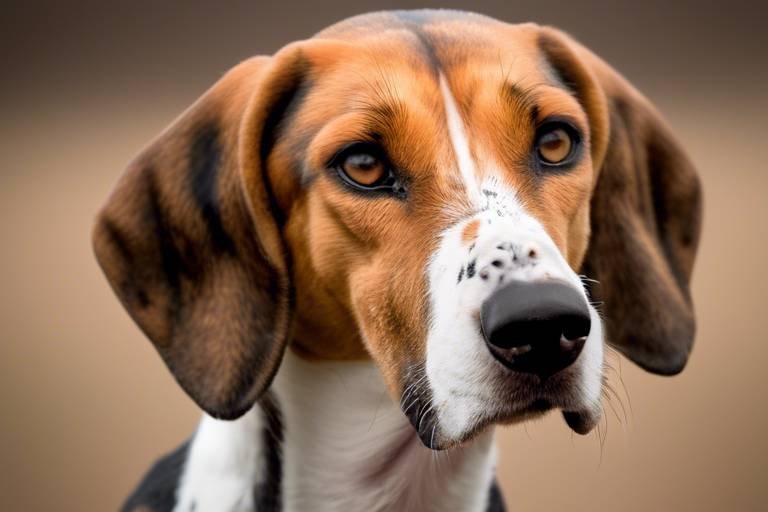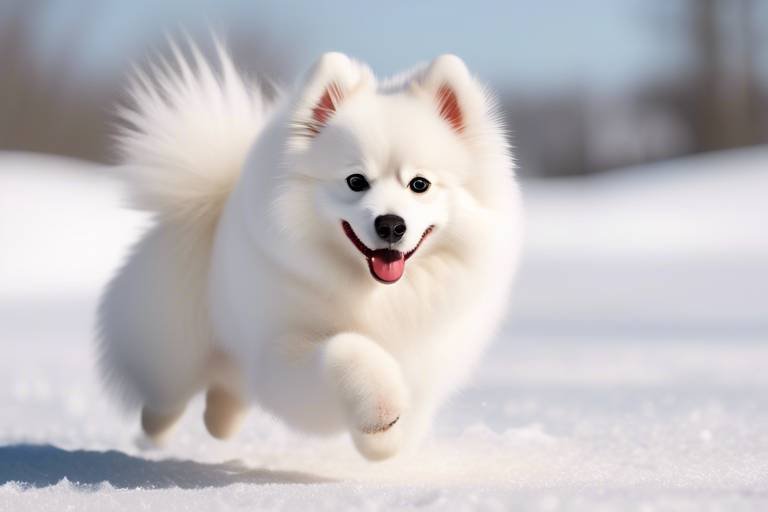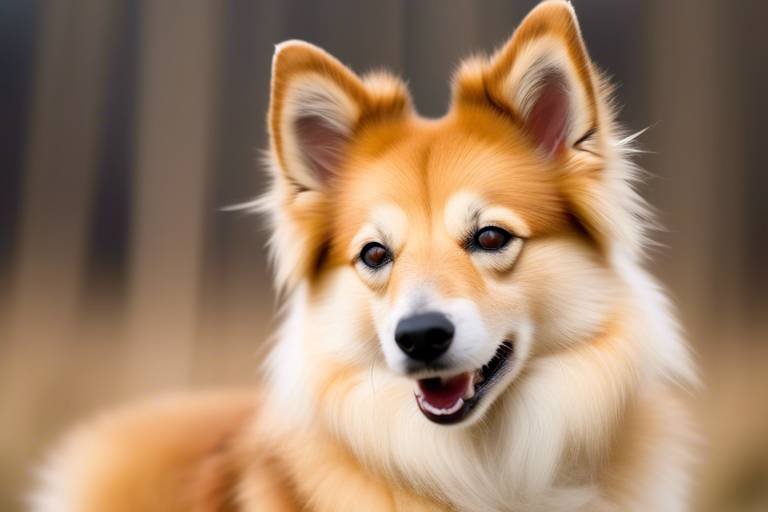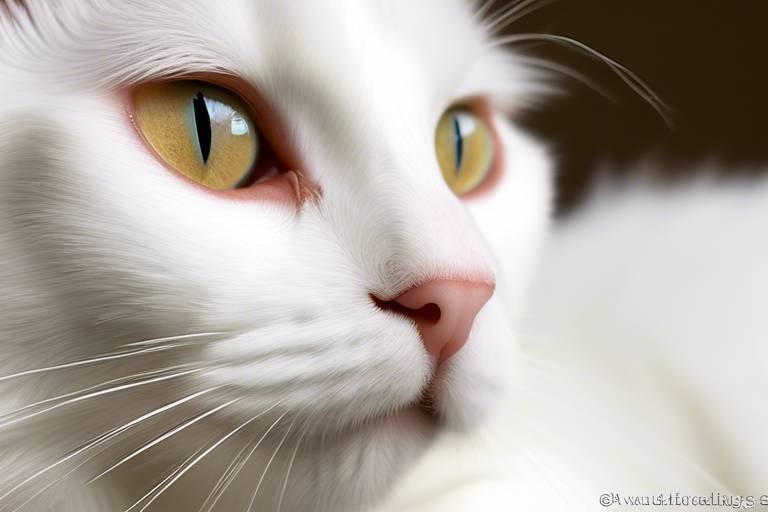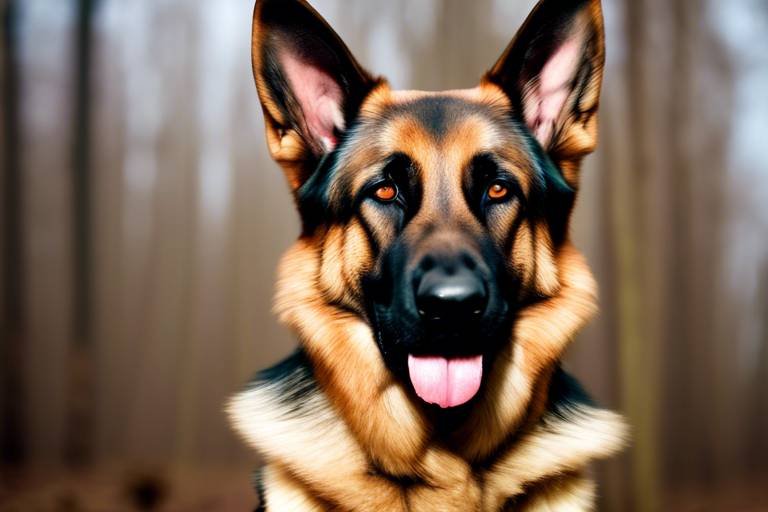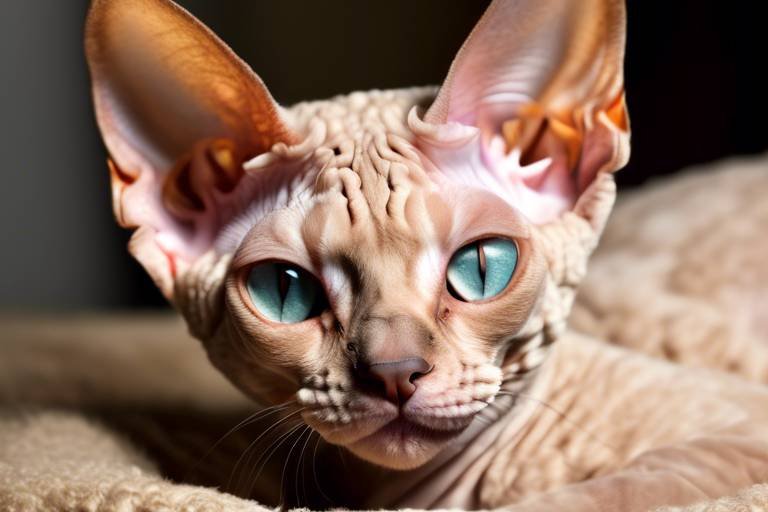Understanding the Unique Features of the Old English Sheepdog
The Old English Sheepdog is not just a dog; it’s a bundle of joy wrapped in a shaggy coat! Known for their friendly demeanor and playful spirit, these dogs have captured the hearts of many families across the globe. But what makes them truly unique? In this article, we will dive deep into the distinctive characteristics of the Old English Sheepdog, exploring its rich history, charming physical traits, and endearing temperament. Whether you are considering bringing one into your home or simply want to learn more about this fascinating breed, you’re in for a treat!
First, let’s take a stroll down memory lane to uncover the fascinating history of the Old English Sheepdog. Originally bred as herding dogs in the rolling hills of England, they played a pivotal role in British agriculture for centuries. Their strong work ethic and intelligence made them invaluable companions to farmers, herding sheep and cattle with remarkable agility. Imagine them bounding across fields, their fluffy coats billowing in the wind, tirelessly guiding livestock to safety. This rich background not only showcases their capability but also contributes to their loyal and protective nature.
Next, let's talk about the physical characteristics that make the Old English Sheepdog stand out in a crowd. With their iconic shaggy coat and sturdy build, these dogs are hard to miss. Standing between 20 to 22 inches tall and weighing anywhere from 60 to 100 pounds, they exude a sense of presence that can be both comforting and impressive. Their coat, a double layer of thick fur, is not just for show; it provides insulation and protection from the elements. But what colors can you expect? The Old English Sheepdog typically sports a mix of gray, black, and white, creating a striking appearance that turns heads wherever they go.
The coat of the Old English Sheepdog is one of its most defining features. This shaggy, double coat is not only beautiful but also requires dedicated grooming to maintain its health and appearance. Regular brushing is essential to prevent mats and tangles. Owners often find themselves in a love-hate relationship with grooming sessions—while they can be time-consuming, the end result is a stunning, fluffy companion that’s ready to steal the spotlight!
Speaking of grooming, let’s delve deeper into the tools and techniques necessary to keep your Old English Sheepdog looking its best. A good quality slicker brush, comb, and de-shedding tool are must-haves in your grooming arsenal. Aim for at least two to three grooming sessions a week, and don’t forget about regular baths to keep their coat fresh and clean. The grooming process can be an excellent bonding experience, turning a chore into a cherished routine.
Understanding the size and build of the Old English Sheepdog is crucial for potential owners. Their solid, muscular frame not only gives them a commanding presence but also contributes to their agility and strength. This breed is well-suited for families with ample space, as they thrive in environments where they can roam and play. However, their adaptability means they can also adjust to smaller living spaces, provided they receive regular exercise and mental stimulation.
Now, let’s shift our focus to the temperament of the Old English Sheepdog. These dogs are known for being friendly, affectionate, and playful. They have a natural affinity for children and often become the best playmates in the household. Their gentle nature makes them an excellent choice for families, as they are typically patient and loving. Imagine a fluffy guardian who watches over your kids as they play, always ready to join in on the fun!
In conclusion, the Old English Sheepdog is a remarkable breed that combines a rich history, unique physical traits, and a loving temperament. Whether you’re captivated by their adorable appearance or their playful spirit, it’s clear that these dogs have a special charm that makes them beloved companions. As we continue this exploration, we’ll discuss their training needs, health considerations, and much more. Stay tuned!
- How much exercise does an Old English Sheepdog need? They require daily exercise, including walks and playtime, to keep them healthy and happy.
- Are Old English Sheepdogs good with children? Yes! They are known for their gentle and playful nature, making them excellent family pets.
- How often should I groom my Old English Sheepdog? Regular grooming at least two to three times a week is essential to keep their coat healthy and mat-free.
- What are common health issues in Old English Sheepdogs? They can be prone to hip dysplasia and certain eye conditions, so regular vet check-ups are important.

History of the Old English Sheepdog
The Old English Sheepdog boasts a rich and fascinating history that dates back several centuries. Originating in England, this breed was primarily developed as a herding dog, designed to assist farmers in managing their flocks of sheep. The Old English Sheepdog's robust build and intelligent demeanor made it an invaluable asset in British agriculture, particularly during the 18th and 19th centuries when sheep farming was at its peak.
Historically, these dogs were often referred to as Bobtails due to their naturally short tails, which were traditionally docked for practical purposes. The breed's ancestry can be traced back to various herding breeds, including the Bearded Collie and the Scottish Sheepdog. Over time, selective breeding focused on enhancing their herding abilities, as well as their distinctive shaggy coats that have become synonymous with the breed.
During the Victorian era, the Old English Sheepdog gained popularity not only for its working skills but also as a companion animal. This shift marked a significant change in how the breed was perceived, as more families began to appreciate their loyal and gentle nature. The breed's charm and playful spirit made it a favorite among families, and it soon became a staple in British households.
As the 20th century rolled in, the Old English Sheepdog made its mark in popular culture, appearing in films and television shows that showcased its endearing personality. However, with the decline of traditional sheep farming, the breed's working role diminished, leading to a decline in its population. Thankfully, dedicated breeders and enthusiasts have worked tirelessly to preserve the Old English Sheepdog, ensuring that it remains a beloved companion and a symbol of British heritage.
Today, the Old English Sheepdog is not just a nostalgic reminder of its farming roots; it has evolved into a cherished family pet known for its affectionate nature and playful disposition. These dogs thrive in family environments, where they can engage with children and other pets, showcasing their friendly temperament. As we explore the unique characteristics of the Old English Sheepdog, we can appreciate how its history has shaped the breed into the lovable companion it is today.
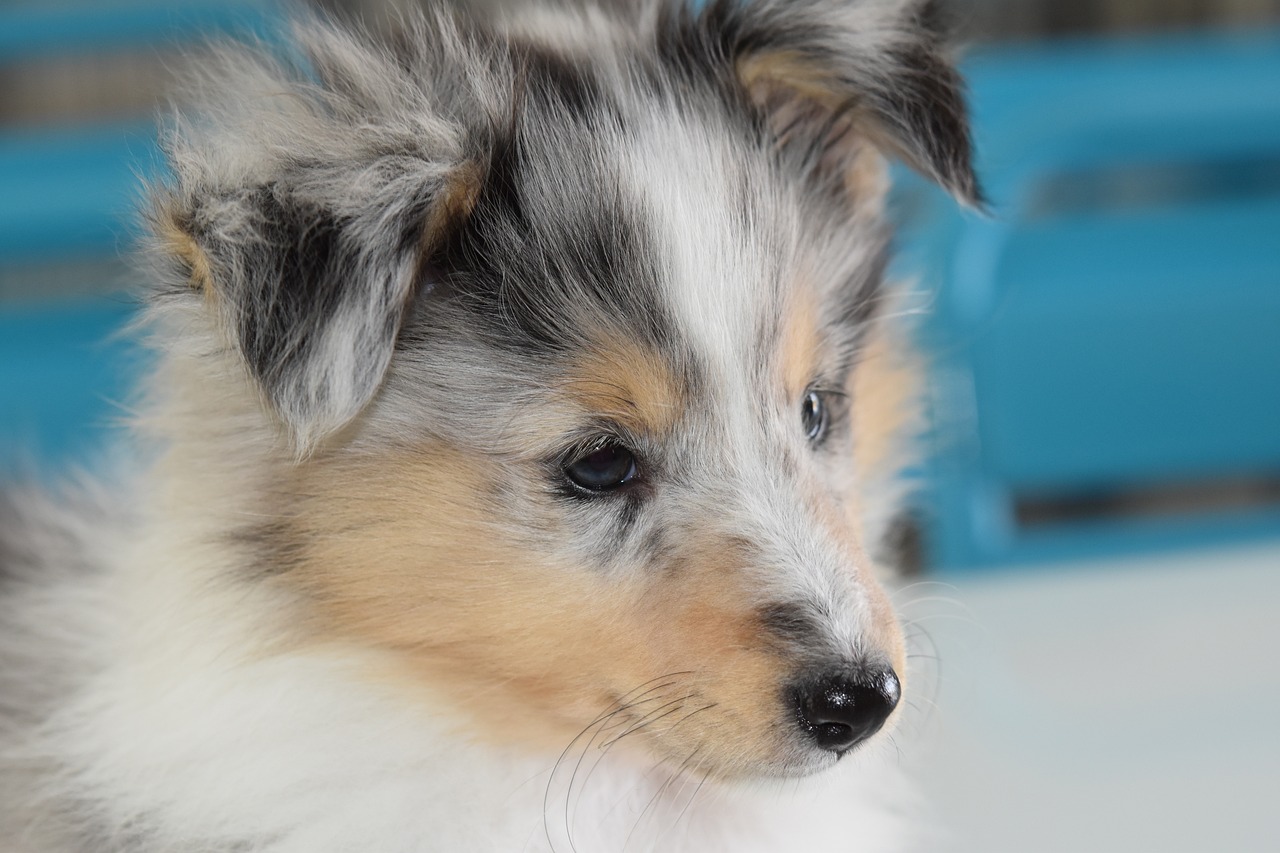
Physical Characteristics
The Old English Sheepdog is a breed that truly stands out in a crowd, thanks to its unique and striking physical characteristics. Known for its shaggy, double coat, this breed has an appearance that can be both endearing and awe-inspiring. The coat serves not only as a protective layer but also contributes significantly to the dog’s overall charm. Imagine a fluffy cloud rolling across the field—that’s the Old English Sheepdog in a nutshell! This breed typically weighs between 60 to 100 pounds, with males generally larger than females, standing at an impressive height of 20 to 22 inches at the shoulder.
One of the most distinctive features of the Old English Sheepdog is its coat, which comes in a variety of colors, including shades of blue, gray, and black, often mixed with white. The coat is not just for show; it provides insulation against harsh weather conditions, allowing these dogs to thrive in various climates. However, this beautiful coat requires regular grooming to prevent matting and tangling. Without proper care, their fur can become a tangled mess, resembling a mop more than a majestic sheepdog!
The Old English Sheepdog’s coat is a double layer, featuring a soft undercoat that keeps the dog warm and a longer, coarser outer coat that protects against the elements. To maintain this signature look, owners should invest in quality grooming tools, such as slicker brushes and combs. Regular grooming sessions not only keep the coat healthy but also provide an opportunity for bonding between the dog and its owner. Here’s a quick overview of the grooming needs:
| Grooming Task | Frequency | Tools Needed |
|---|---|---|
| Brushing | 2-3 times a week | Slicker brush, comb |
| Bathing | Every 4-6 weeks | Dog shampoo, towels |
| Nail trimming | Monthly | Nail clippers, grinder |
Grooming is not just about aesthetics; it’s a crucial aspect of maintaining your Old English Sheepdog’s health. Regular brushing helps to remove loose fur and dirt, preventing skin issues and promoting a healthy coat. Moreover, during grooming sessions, pet owners should keep an eye out for any unusual lumps, bumps, or skin irritations. If you notice anything concerning, don’t hesitate to consult your veterinarian. Remember, a well-groomed dog is a happy dog!
The Old English Sheepdog has a robust, sturdy build that reflects its history as a working dog. With a broad head and strong neck, this breed exudes a sense of strength and confidence. Their muscular frame is well-suited for herding and other physical activities, making them excellent companions for active families. Despite their size, these dogs are surprisingly agile and can often be seen bounding around with playful energy. Their playful demeanor, combined with their size, can be likened to a gentle giant—full of love and energy, yet always aware of their surroundings.
In conclusion, the physical characteristics of the Old English Sheepdog are not only what make them visually appealing but also crucial for their functionality as a breed. Their unique coat, size, and build contribute to their charm and suitability as a family pet. If you’re considering adding one of these fluffy companions to your home, be prepared for a commitment to grooming and care that will ensure your Old English Sheepdog remains the stunning, lovable creature they were born to be!
- How often should I groom my Old English Sheepdog? - It's recommended to groom them 2-3 times a week to prevent matting.
- What is the average lifespan of an Old English Sheepdog? - They typically live between 10 to 12 years.
- Are Old English Sheepdogs good with children? - Yes, they are known to be friendly and playful, making them great family pets.
- Do they require a lot of exercises? - Yes, they need regular exercise to keep them healthy and happy.
Coat and Color
The Old English Sheepdog is renowned for its stunning and distinctive coat, which is one of the breed's most recognizable features. This shaggy, double coat not only gives the dog its iconic look but also serves practical purposes, such as providing insulation and protection from the elements. The outer layer is long and coarse, while the undercoat is soft and dense, making it an excellent barrier against cold weather. Imagine wrapping yourself in a warm, cozy blanket—that's what these dogs feel like!
When it comes to color, Old English Sheepdogs typically showcase a beautiful blend of shades. The most common colors include:
- Blue and White: A classic combination, often with a predominantly blue coat accented by white markings.
- Gray and White: Similar to blue, but with a more muted appearance.
- Black and White: A striking contrast that is less common but equally charming.
- Brown and White: Another variation that adds a unique twist to the breed's palette.
Maintaining the Old English Sheepdog's coat requires a commitment to grooming. Their long hair can easily become matted if not cared for regularly. To keep their coat looking its best, it's essential to brush them several times a week. This not only removes dirt and debris but also helps distribute natural oils, keeping their coat healthy and shiny. Think of grooming as a bonding experience—it's a time for you to connect with your furry friend while keeping them looking fabulous!
In terms of grooming tools, you’ll want to invest in a few essentials. A slicker brush is great for detangling, while a wide-toothed comb can help with any stubborn knots. Additionally, regular baths using a gentle dog shampoo can keep their coat clean and fresh. However, be cautious not to over-bathe, as this can strip the natural oils from their skin, leading to dryness and irritation.
In summary, the coat and color of the Old English Sheepdog are not just about looks; they reflect the breed's history and purpose. Their shaggy appearance is a testament to their working origins, while the variety of colors showcases the breed's unique charm. By understanding the grooming needs associated with their coat, potential owners can ensure their Old English Sheepdog remains healthy and stunning throughout its life.
Q: How often should I groom my Old English Sheepdog?
A: It's recommended to groom them at least 2-3 times a week to prevent matting and keep their coat healthy.
Q: What is the best way to bathe my Old English Sheepdog?
A: Use a gentle dog shampoo and avoid over-bathing. Aim for a bath every 2-3 months, or as needed.
Q: Can Old English Sheepdogs have different coat colors?
A: Yes, they can come in various colors, including blue and white, gray and white, black and white, and brown and white.
Grooming Needs
Grooming an Old English Sheepdog is not just a chore; it’s a vital part of keeping your furry friend happy and healthy. With their shaggy double coat, these dogs require regular attention to prevent mats and tangles, which can lead to skin issues if left untreated. Imagine trying to comb through a tangled ball of yarn—frustrating, right? That’s what your Old English Sheepdog feels if you skip grooming sessions!
To keep their coat looking its best, it's recommended to brush them at least two to three times a week. A slicker brush and a wide-toothed comb are essential tools in your grooming arsenal. The slicker brush helps to remove loose hair and debris, while the comb can help detangle any knots. Don’t forget about their ears and paws; these areas can easily collect dirt and debris, so a quick check during grooming can make a big difference.
Bathing is another important aspect of grooming. Generally, you should aim to bathe your Old English Sheepdog every two to three months, unless they get particularly dirty. Using a gentle dog shampoo will keep their coat healthy and shiny. After a bath, make sure to dry them thoroughly, as moisture can lead to skin irritations. You can even use a blow dryer on a low setting, but be careful not to scare your pup!
Here’s a quick overview of the grooming needs for an Old English Sheepdog:
| Grooming Task | Frequency | Tools Needed |
|---|---|---|
| Brushing | 2-3 times a week | Slicker brush, wide-toothed comb |
| Bathing | Every 2-3 months | Gentle dog shampoo |
| Ears and Paws Check | During each grooming session | Wipes or damp cloth |
Lastly, don’t underestimate the importance of regular professional grooming. Taking your Old English Sheepdog to a groomer every few months can help manage their coat and keep them looking fabulous. Plus, it’s a great way to socialize your dog, exposing them to new experiences and people, which is beneficial for their overall temperament.
In summary, grooming your Old English Sheepdog is an ongoing commitment that pays off in the long run. With the right tools, techniques, and a little love, you can ensure that your furry companion stays healthy, comfortable, and looking as adorable as ever!
- How often should I groom my Old English Sheepdog? Ideally, you should brush them two to three times a week to prevent mats and tangles.
- Can I bathe my Old English Sheepdog too often? Yes, bathing too frequently can strip their coat of natural oils. Aim for every two to three months.
- What tools do I need for grooming? A slicker brush, a wide-toothed comb, and gentle dog shampoo are essential.
- Should I take my dog to a professional groomer? Yes, regular visits to a groomer can help manage their coat and provide socialization opportunities.
Size and Build
The Old English Sheepdog is not just a pretty face; it boasts a robust and well-proportioned build that reflects its heritage as a herding dog. Typically, males stand between 21 to 24 inches tall at the shoulder, while females range from 20 to 22 inches. This breed is known for its substantial weight, generally falling between 60 to 100 pounds, depending on its sex and overall health. Such a size gives the Old English Sheepdog a commanding presence, making it both impressive and endearing in equal measure.
When you first lay eyes on an Old English Sheepdog, you can't help but notice its distinctively stocky frame. The breed is characterized by a broad head, strong neck, and deep chest, all of which contribute to its sturdy appearance. This build is not just for show; it was designed to endure long hours of work in the fields, herding sheep across the rugged British countryside. The dog's strong legs and large paws provide stability and agility, allowing it to navigate various terrains with ease.
It's also worth noting that the Old English Sheepdog has a unique gait. When it moves, it often appears to glide rather than trot, thanks to its well-balanced structure and powerful muscles. This elegant movement is a testament to the breed's athleticism and adaptability. However, potential owners should consider their living environment carefully. While these dogs can adapt to various situations, they thrive in homes with ample space to roam and play. A backyard is a plus, but regular exercise and outdoor activity are essential to keep them happy and healthy.
For those considering bringing an Old English Sheepdog into their homes, understanding their size and build is crucial. Not only does it affect their exercise needs, but it also influences their compatibility with different living spaces. For instance, a small apartment may not be the best fit for such a large and energetic breed. Instead, they flourish in environments where they can stretch their legs and engage in play. Moreover, their size means they can unintentionally knock over small children or delicate furniture, so supervision is always a good idea.
In conclusion, the Old English Sheepdog's size and build are integral to its identity as a breed. With its strong, sturdy frame and charming, shaggy coat, this dog is not just a pet; it's a companion that requires space, exercise, and plenty of love. So, if you're ready to welcome this delightful breed into your life, be prepared for a loyal friend that embodies both strength and affection.
Temperament and Behavior
The Old English Sheepdog is not just a breed; it’s a personality wrapped in fur! Known for their friendly and playful nature, these dogs are often described as the ultimate family companion. They thrive on human interaction and are incredibly social, making them great pets for families with children. Imagine a fluffy cloud bouncing around your living room, wagging its tail and bringing joy to everyone around – that’s the essence of an Old English Sheepdog!
One of the standout characteristics of this breed is their gentle demeanor. They are known to be patient and tolerant, which is especially important when they’re around kids. Whether it’s a game of fetch or a cozy cuddle on the couch, these dogs have a knack for making everyone feel loved and included. Their playful spirit often leads to hilarious antics that can turn any ordinary day into a memorable one.
However, it’s essential to understand that their friendly nature doesn’t mean they’re just lap dogs. Old English Sheepdogs are also intelligent and have a strong herding instinct. This means they can be quite independent and may exhibit a stubborn streak if not properly trained. It’s like having a teenager in the house – they want to make their own decisions! Therefore, early training and consistent reinforcement are crucial to help them learn boundaries and good behavior.
When it comes to socialization, the Old English Sheepdog excels. They are generally good with other pets, but early exposure to various environments, people, and animals is key. Think of it as teaching them the ropes of the world! A well-socialized Old English Sheepdog will be confident and well-adjusted, ready to take on new experiences without fear. This breed thrives in settings where they can interact with others, whether it’s at a dog park or a family gathering.
Additionally, their affectionate nature means they are often very loyal to their families. They form strong bonds with their human companions and can be quite protective, making them excellent watchdogs. But don’t worry; their protective instincts are usually balanced with their friendly disposition. They’ll greet your guests with a wagging tail and a curious sniff rather than a growl.
In summary, the Old English Sheepdog is a delightful blend of playfulness, intelligence, and affection. Their temperament makes them a joy to have around, but it’s essential to invest time in training and socialization. With the right guidance, you’ll find that your Old English Sheepdog is not just a pet; they become a cherished member of your family!
- Are Old English Sheepdogs good with children? Yes, they are known for their gentle and playful nature, making them great companions for kids.
- How much exercise do they need? Old English Sheepdogs require regular exercise, such as daily walks and playtime, to keep them healthy and happy.
- Do they shed a lot? Yes, they have a double coat that sheds, so regular grooming is essential to manage their fur.
- Are they easy to train? They are intelligent but can be stubborn, so consistent training methods and positive reinforcement work best.
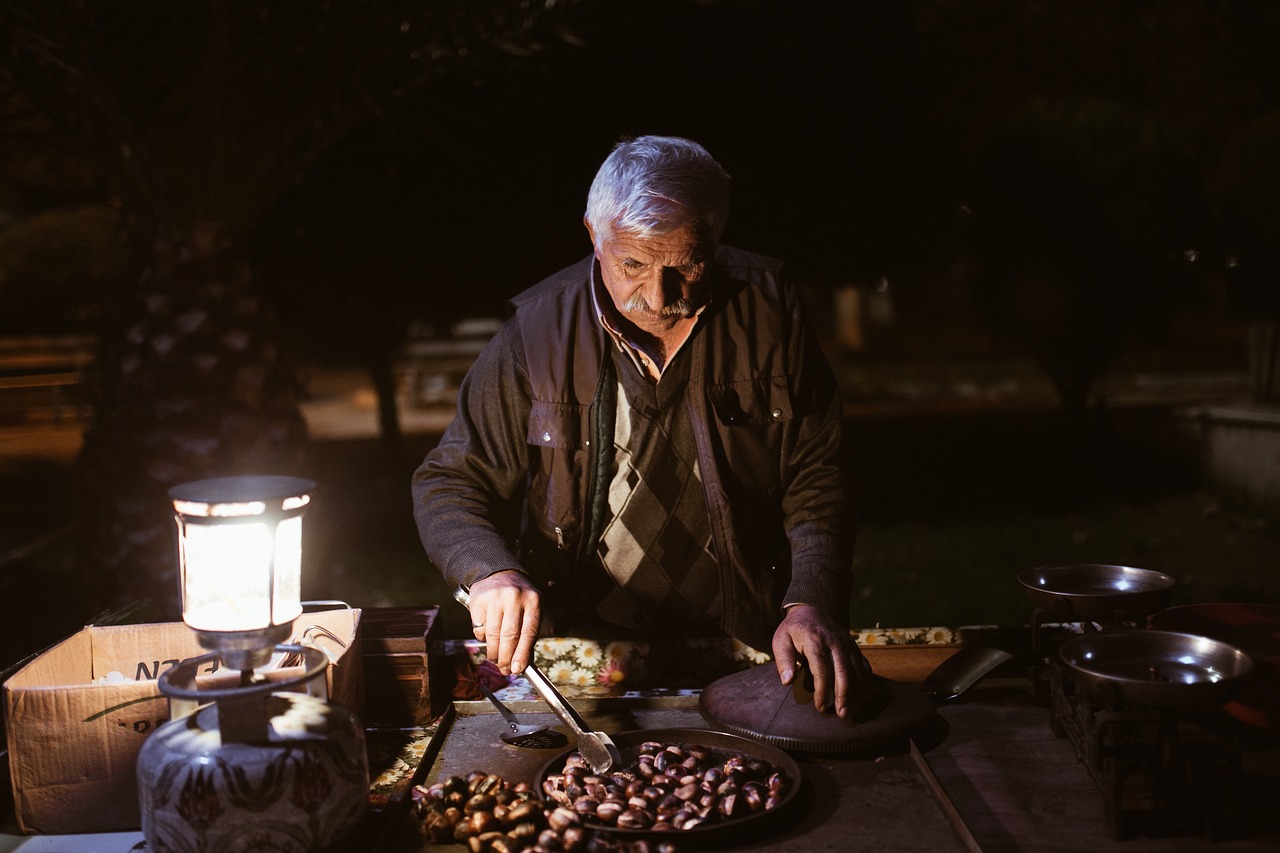
Training and Socialization
Training an Old English Sheepdog is not just a task; it's an adventure filled with joy and bonding moments. These dogs are known for their intelligence, which means they can pick up commands quickly, but they can also be a bit stubborn at times. This unique blend of traits makes early training and socialization absolutely crucial. Imagine trying to teach a toddler to share their toys—it's all about patience, consistency, and a sprinkle of fun! Starting training early helps your pup understand the rules of the household and promotes good behavior as they grow.
One effective approach is to incorporate positive reinforcement techniques. This means rewarding your Old English Sheepdog with treats, praise, or playtime whenever they follow a command. For instance, if your dog sits on command, shower them with love and a tasty treat. This not only encourages them to repeat the behavior but also strengthens the bond between you two. Remember, the more positive experiences your dog has during training, the more eager they will be to learn!
Socialization, on the other hand, is equally important. Just like humans, dogs need to learn how to interact with different environments, people, and animals. Imagine your Old English Sheepdog as a young child entering a bustling playground for the first time. They need to learn how to navigate various social situations to grow into well-adjusted adults. Take your puppy to parks, pet-friendly events, or even just on walks around the neighborhood. Exposing them to diverse experiences helps them become confident and friendly companions.
Here are some tips to enhance your training and socialization efforts:
- Start Early: Begin training and socialization as soon as you bring your puppy home. The earlier, the better!
- Keep it Fun: Incorporate games and play into training sessions to keep your dog engaged and excited.
- Be Consistent: Use the same commands and rewards consistently to avoid confusing your dog.
- Gradual Exposure: Introduce your dog to new experiences gradually, ensuring they feel safe and secure.
In summary, training and socialization are not just essential for an Old English Sheepdog; they are the keys to unlocking a lifetime of happiness and companionship. By investing time and effort into these areas, you're not only teaching your dog commands but also fostering a loving and trusting relationship that will last a lifetime.
Common Training Techniques
Training an Old English Sheepdog can be an exciting journey that not only strengthens your bond but also helps in shaping a well-mannered companion. These dogs are bright and eager to please, making them highly trainable when approached correctly. The key is to use positive reinforcement techniques, which focus on rewarding good behavior rather than punishing bad behavior. This method not only fosters a trusting relationship but also encourages your furry friend to repeat the desired actions.
One effective technique is to use treats as a reward. Imagine your Old English Sheepdog as a child learning to ride a bike; a small piece of kibble or a favorite treat can be the motivating factor that makes them want to try harder. You can start with basic commands like sit, stay, and come. Each time your dog successfully follows a command, shower them with praise and a treat. This creates a positive association with the command, making it more likely they will respond in the future.
Consistency is another crucial element in training. Just like a recipe that requires the same ingredients every time for the best outcome, your dog needs to receive consistent cues and rewards. Use the same words and gestures for commands, and ensure that everyone in your household follows the same training protocols. This prevents confusion and helps your Old English Sheepdog understand what is expected of them.
Additionally, incorporating play into training sessions can make the experience enjoyable for both you and your dog. Consider using toys as rewards or engaging in games that reinforce commands. For example, playing fetch can be a fun way to teach your dog to come when called. Just remember to keep training sessions short and engaging—around 5 to 10 minutes is usually optimal for maintaining their attention.
Another technique worth mentioning is the use of clicker training. This method involves using a small device that makes a clicking sound to mark the exact moment your dog performs a desired behavior. This sound acts as a bridge to the reward, making it clear to your dog what they did right. Over time, your Old English Sheepdog will associate the click with a treat, leading to quicker learning and better retention of commands.
Lastly, socialization plays a pivotal role in training. Exposing your Old English Sheepdog to various environments, people, and other animals helps them become well-rounded adults. Think of it as giving them a taste of the world; the more they experience, the more confident and adaptable they will be. You can take them to parks, pet-friendly cafes, or even on playdates with other dogs. Just remember to supervise these interactions to ensure they are positive experiences.
In summary, training your Old English Sheepdog should be a rewarding experience filled with patience, consistency, and fun. By employing positive reinforcement, maintaining consistency, incorporating play, and ensuring proper socialization, you will set your furry friend up for success. With time and dedication, you'll have a well-trained companion who not only follows commands but also thrives as a beloved member of your family.
- How long does it take to train an Old English Sheepdog? Training can vary depending on the individual dog, but with consistent effort, basic commands can often be learned within a few weeks.
- Are Old English Sheepdogs easy to train? Yes, they are generally eager to please and respond well to positive reinforcement techniques.
- What age should I start training my Old English Sheepdog? It's best to start training as early as possible, ideally when they are still puppies, to instill good habits from a young age.
- Do I need professional help to train my Old English Sheepdog? While many owners successfully train their dogs at home, seeking professional help can be beneficial, especially for first-time dog owners.
Socialization Tips
Socializing your Old English Sheepdog is a crucial step in ensuring they grow up to be well-adjusted and confident adults. Just like humans, dogs benefit from exposure to a variety of environments, people, and other animals. Imagine a child growing up in a bubble; they wouldn't know how to interact with the world outside. Similarly, your furry friend needs to experience different situations to thrive. Start early! The earlier you introduce your puppy to new experiences, the more comfortable they will be as they grow.
One effective way to socialize your Old English Sheepdog is by taking them on regular outings. These can include trips to the park, pet-friendly stores, or even doggy daycare. Each new environment presents unique sights, sounds, and smells, providing invaluable learning experiences. For instance, when you take them to a park, they can interact with other dogs and people, which helps them learn appropriate social behaviors. Just remember to keep the experiences positive and rewarding!
Another tip is to expose your dog to various types of people. This includes children, adults, and elderly individuals. You might be surprised at how your Old English Sheepdog reacts to different age groups. Some dogs may be more excited around younger kids, while others may prefer the calmness of older adults. Organizing playdates with friends who have dogs can also be beneficial. It creates a fun atmosphere where your dog can learn how to play and interact with others.
Don't forget about the importance of positive reinforcement during socialization. Every time your Old English Sheepdog successfully interacts with someone or something new, shower them with praise or treats. This will help them associate new experiences with positive outcomes, making them more likely to engage in the future. Consistency is key! Make socialization a regular part of your routine, and you'll see your dog's confidence blossom.
Lastly, be mindful of your dog's body language. If they seem overwhelmed or scared, it’s essential to give them space and allow them to acclimate at their own pace. Pushing them too hard can lead to negative associations with socialization, which is the opposite of what you want to achieve. Instead, encourage them gently and allow them to retreat if they need to. Remember, the goal is to create a happy, confident Old English Sheepdog who loves to meet new friends!
- How early should I start socializing my Old English Sheepdog?
It's best to start socializing your puppy as early as possible, ideally between 3 to 14 weeks of age, when they are most receptive to new experiences. - What are some signs that my dog is feeling anxious during socialization?
Look for signs like excessive barking, hiding, or a tucked tail. If your dog shows these signs, it may be time to give them a break. - Can I socialize my older Old English Sheepdog?
Absolutely! While it may take more time and patience, older dogs can still learn to socialize. Just introduce them to new experiences gradually. - How do I know if my Old English Sheepdog is properly socialized?
A well-socialized dog will be comfortable in various environments, enjoy meeting new people and pets, and display calm behavior in unfamiliar situations.
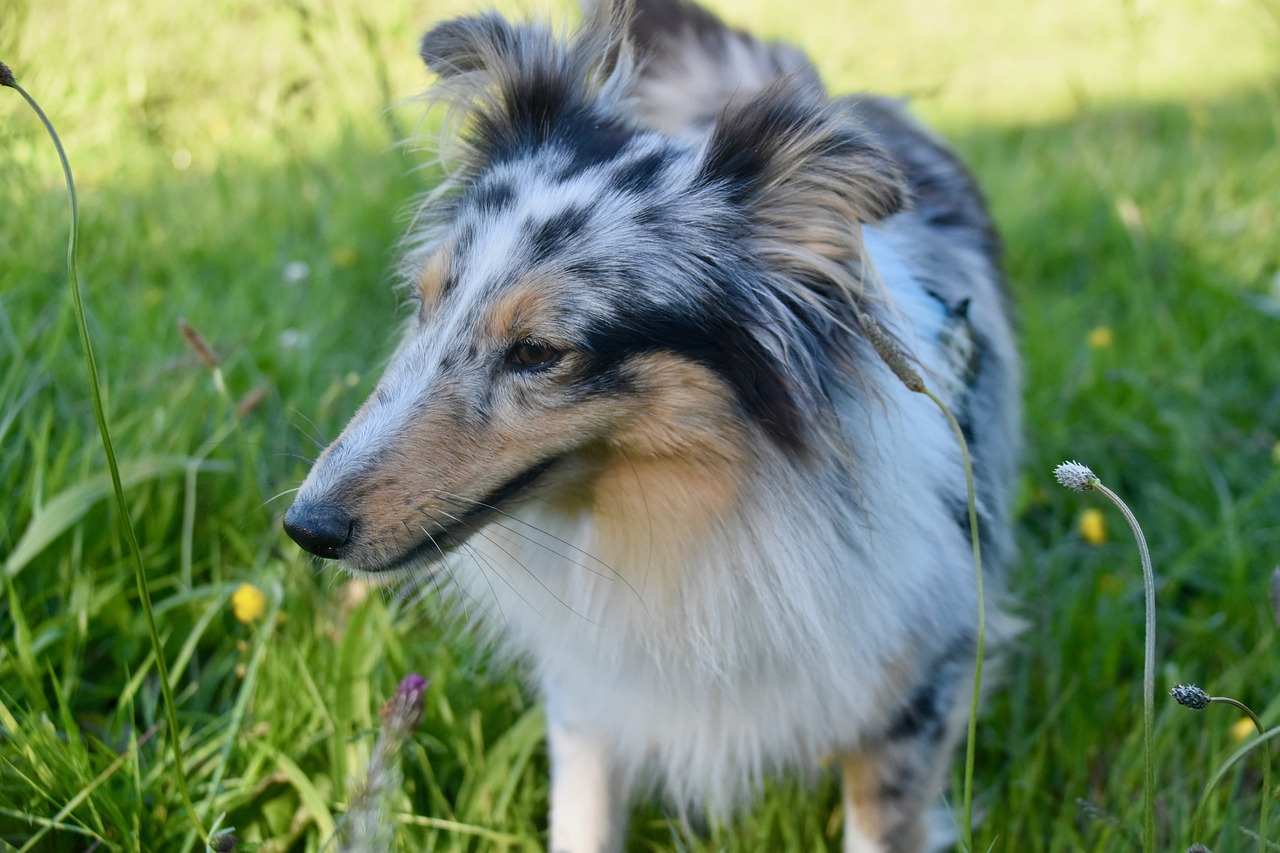
Health Considerations
The health of your Old English Sheepdog is paramount, not just for their happiness but also for their longevity. Like all breeds, these lovable, shaggy companions can be prone to certain health issues that potential owners should be aware of. Understanding these concerns allows for better preventive care and a more enjoyable life with your furry friend.
One of the most common health issues affecting Old English Sheepdogs is hip dysplasia. This genetic condition occurs when the hip joint doesn't fit snugly into the hip socket, leading to arthritis and pain. It’s crucial to monitor your dog for signs of discomfort, such as difficulty standing or reluctance to engage in play. Regular veterinary check-ups can help catch this issue early and manage it effectively.
Another health concern to keep an eye on is eye conditions, including cataracts and progressive retinal atrophy (PRA). These conditions can lead to vision impairment and, in severe cases, blindness. Routine eye examinations by a veterinarian can help detect these issues before they become problematic. Additionally, keeping your dog away from harsh environments can protect their sensitive eyes.
To give you a better overview, here’s a table summarizing some common health issues and their preventive measures:
| Health Issue | Description | Preventive Care |
|---|---|---|
| Hip Dysplasia | A genetic condition affecting the hip joint. | Regular vet check-ups, maintain a healthy weight. |
| Eye Conditions | Includes cataracts and PRA, affecting vision. | Routine eye exams, protect from harsh environments. |
Preventive care is essential for maintaining your Old English Sheepdog's health. Regular vet visits are not just for vaccinations; they provide an opportunity to discuss any health concerns and get your dog checked for early signs of potential issues. A balanced diet plays a significant role as well. Feeding your dog high-quality food tailored to their age, size, and activity level can help prevent obesity, which is a risk factor for many health problems.
In addition to diet and veterinary care, exercise is vital. Old English Sheepdogs are energetic and require regular physical activity to stay healthy and happy. Daily walks, playtime, and mental stimulation can help keep them in great shape. Remember, a tired dog is a happy dog!
By being proactive about your Old English Sheepdog's health, you can ensure they lead a long, fulfilling life. Regular monitoring, a balanced diet, and consistent exercise are the keys to a happy and healthy furry companion.
- What are the signs of hip dysplasia in Old English Sheepdogs? Look for difficulty in rising, reluctance to jump or run, and noticeable changes in their walking pattern.
- How often should I take my Old English Sheepdog to the vet? Regular check-ups every six months are recommended, along with vaccinations and dental care.
- What should I feed my Old English Sheepdog? A balanced diet with high-quality dog food suited for their age, size, and activity level is essential.
Common Health Issues
The Old English Sheepdog, while a beloved companion, is prone to certain health issues that potential owners should be aware of. Understanding these common health concerns is crucial for ensuring your furry friend lives a long and happy life. Among the most prevalent issues are hip dysplasia, eye conditions, and skin problems. Each of these conditions can significantly affect the dog's quality of life, but with early detection and proper care, many can be managed effectively.
Hip dysplasia is a genetic condition where the hip joint doesn't fit snugly into the hip socket. This can lead to arthritis and pain over time. Symptoms often include difficulty in rising, reluctance to exercise, and a noticeable limp. Regular vet check-ups and maintaining a healthy weight can help mitigate the risks associated with this condition.
Another concern for the Old English Sheepdog is eye conditions, particularly cataracts and progressive retinal atrophy (PRA). These issues can lead to vision impairment or even blindness if not treated promptly. Owners should be vigilant for signs such as difficulty seeing in low light or unusual behavior in new environments. Regular eye examinations by a veterinarian can be a proactive measure in catching these issues early.
Additionally, these dogs can experience skin problems due to their thick, shaggy coats. Conditions like allergies, hot spots, and skin infections can arise, often exacerbated by poor grooming habits. Keeping your Old English Sheepdog well-groomed not only helps maintain their iconic look but also promotes skin health. A proper diet rich in omega fatty acids can also support skin and coat health, reducing the likelihood of issues arising.
To summarize, here’s a quick overview of the common health issues faced by Old English Sheepdogs:
| Health Issue | Description | Symptoms |
|---|---|---|
| Hip Dysplasia | A genetic condition affecting the hip joint. | Difficulties in rising, limping, reluctance to exercise. |
| Eye Conditions | Includes cataracts and progressive retinal atrophy. | Difficulty seeing in low light, unusual behavior. |
| Skin Problems | Allergies, hot spots, and skin infections. | Itching, redness, and hair loss. |
Being proactive about your Old English Sheepdog's health can lead to a more fulfilling and longer life together. Regular visits to the vet, a balanced diet, and a keen eye for any changes in behavior or physical condition are essential steps in ensuring your pet remains happy and healthy.
1. What are the signs of hip dysplasia in Old English Sheepdogs?
Look for symptoms like difficulty getting up, reluctance to run or climb stairs, and noticeable limping. Regular vet check-ups can help catch this early.
2. How often should I take my Old English Sheepdog to the vet?
It's recommended to have annual check-ups; however, if your dog shows any unusual symptoms, you should consult your vet immediately.
3. What can I do to prevent skin problems?
Regular grooming, a balanced diet rich in omega fatty acids, and monitoring for allergies can help prevent skin issues.
4. Are there any specific tests for eye conditions?
Yes, veterinarians can perform specialized eye examinations to detect conditions like cataracts or PRA early on.
Preventive Care
When it comes to ensuring your Old English Sheepdog lives a long and healthy life, is absolutely crucial. Just like we humans visit the doctor for check-ups, our furry friends require regular veterinary visits to monitor their health and catch any potential issues early. A good rule of thumb is to schedule a vet appointment at least once a year, but if your pup is older, you might want to consider bi-annual visits. During these check-ups, your veterinarian will perform a thorough examination, checking vital signs, weight, and overall health.
One of the most common health concerns for Old English Sheepdogs is hip dysplasia, a genetic condition affecting the hip joint. Regular check-ups allow your vet to monitor your dog's hips and suggest appropriate treatments or lifestyle changes if necessary. Additionally, eye conditions such as cataracts and progressive retinal atrophy are also prevalent in this breed. By keeping up with routine vet visits, you can ensure that any signs of these issues are addressed promptly.
In addition to veterinary visits, maintaining a balanced diet is vital for your Old English Sheepdog's health. A diet rich in high-quality proteins, healthy fats, and essential vitamins will help keep your dog in tip-top shape. Always consult with your vet to determine the best food options based on your dog's age, size, and activity level. It’s also important to monitor your dog's weight, as obesity can lead to a host of health problems, including joint issues and diabetes.
Another critical aspect of preventive care is vaccinations. Keeping your Old English Sheepdog up-to-date on vaccinations protects them from various diseases that can be harmful or even fatal. Your vet will provide a vaccination schedule tailored to your dog's needs, which typically includes core vaccines like rabies, distemper, and parvovirus.
Lastly, don't forget about the importance of oral hygiene. Dental health is often overlooked, yet it plays a significant role in your dog's overall well-being. Regular teeth brushing and dental check-ups can prevent periodontal disease, which can lead to more severe health issues. Consider incorporating dental treats or toys that promote oral health into your dog's routine.
In summary, preventive care for your Old English Sheepdog involves a combination of regular veterinary check-ups, a balanced diet, vaccinations, and dental hygiene. By staying proactive about your dog's health, you can ensure they enjoy a vibrant and joyful life by your side.
- How often should I take my Old English Sheepdog to the vet? It's recommended to take them at least once a year, but older dogs may need more frequent visits.
- What kind of diet is best for my Old English Sheepdog? A balanced diet rich in high-quality proteins, healthy fats, and essential vitamins is ideal. Consult your vet for personalized recommendations.
- Are there specific health issues I should watch for? Yes, common issues include hip dysplasia and eye conditions. Regular check-ups will help monitor these concerns.
- How can I maintain my dog's dental health? Regular teeth brushing, dental treats, and vet check-ups can help prevent dental disease.
Frequently Asked Questions
- What is the history of the Old English Sheepdog?
The Old English Sheepdog has a rich history as a herding dog, originally bred in England for herding sheep and cattle. This breed played a crucial role in British agriculture, helping farmers manage their livestock for centuries. Their adaptability and intelligence made them invaluable companions on farms.
- What are the physical characteristics of the Old English Sheepdog?
Old English Sheepdogs are easily recognizable by their shaggy double coat, which can come in various colors, including blue, gray, and black. They have a sturdy build, typically weighing between 60 to 100 pounds, and standing about 20 to 22 inches tall at the shoulder. Their unique appearance adds to their charm and appeal.
- How should I groom an Old English Sheepdog?
Grooming is essential for maintaining the health and appearance of an Old English Sheepdog. Regular brushing is necessary to prevent matting and tangles in their thick coat. It's recommended to use a slicker brush and a comb to keep their fur in top condition. Additionally, bathing should be done as needed, but not too frequently to avoid stripping natural oils.
- What is the temperament of the Old English Sheepdog?
These dogs are known for their friendly and playful nature. They are great with families, children, and other pets, making them excellent companions. Their affectionate demeanor and loyalty make them a favorite among dog lovers. However, they do require regular exercise and mental stimulation to stay happy and healthy.
- What training methods work best for Old English Sheepdogs?
Positive reinforcement is key when training an Old English Sheepdog. Using treats, praise, and playtime as rewards can help encourage good behavior. Consistency is also crucial, as these dogs thrive on routine. Early socialization is important to help them become well-adjusted adults, so exposing them to various environments and situations is beneficial.
- What health issues are common in Old English Sheepdogs?
Like many breeds, Old English Sheepdogs can be prone to certain health issues. Common concerns include hip dysplasia, eye conditions, and skin problems. Regular vet check-ups and being aware of any changes in behavior or physical condition can help catch these issues early, ensuring your dog stays healthy.
- How can I ensure my Old English Sheepdog stays healthy?
Preventive care is vital for your Old English Sheepdog's health. Regular veterinary visits, vaccinations, and a balanced diet are essential. Keeping them active with regular exercise and mental stimulation will also contribute to their overall well-being. Monitoring their weight and adjusting their diet accordingly can help prevent obesity-related issues.



